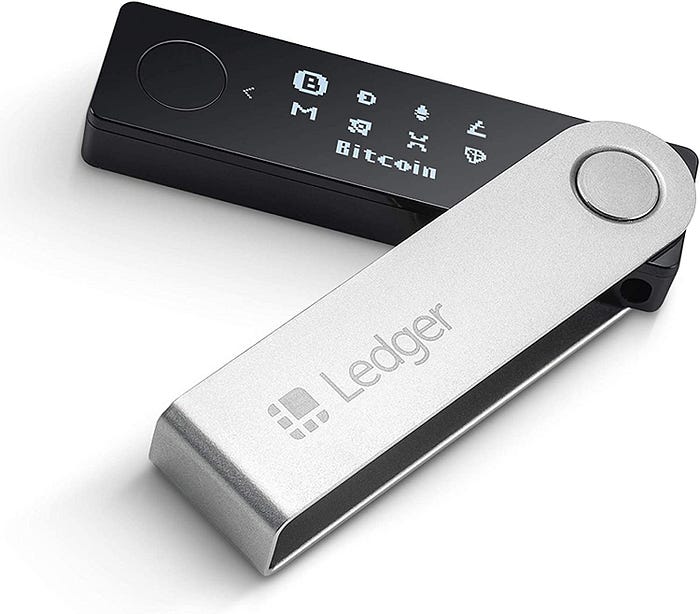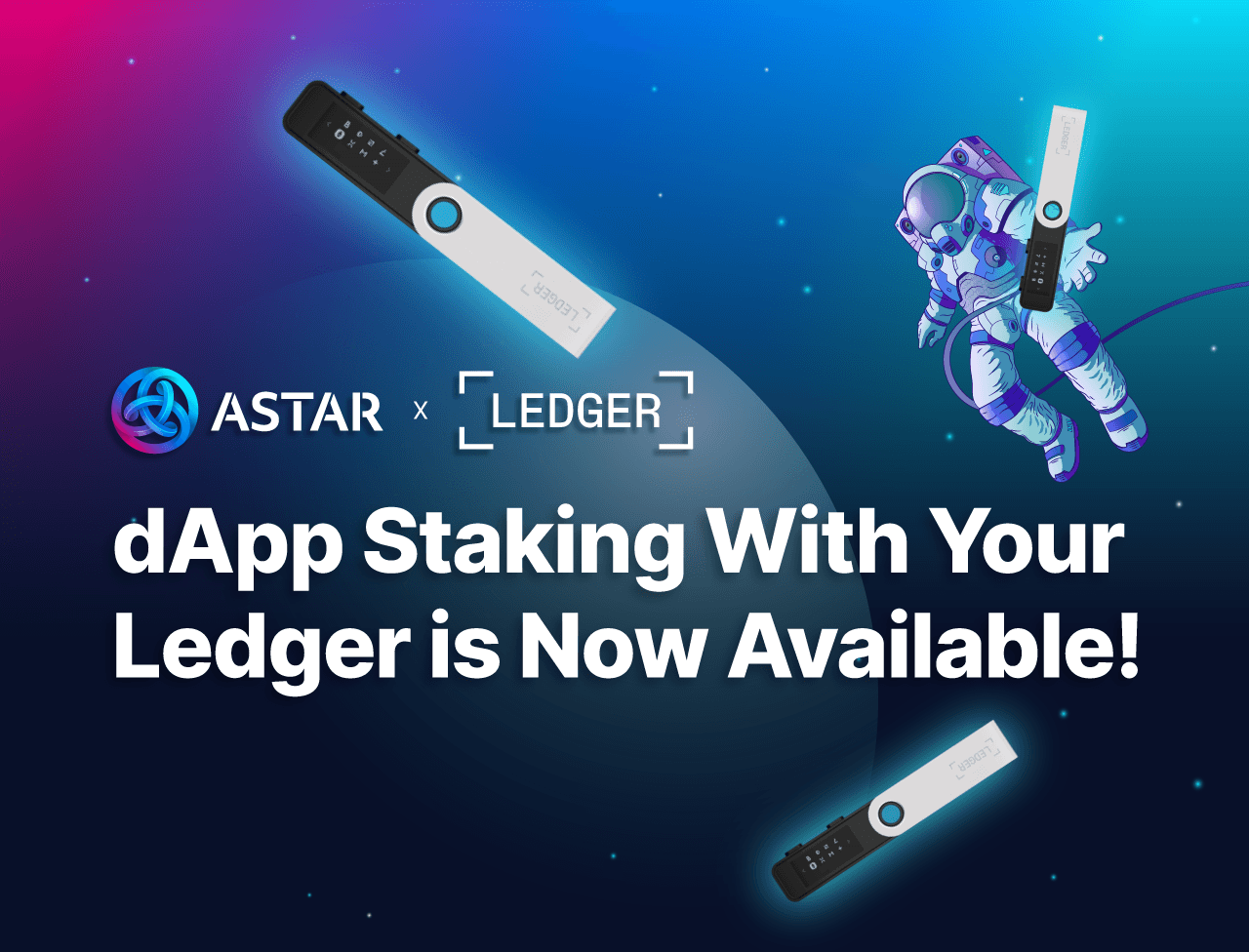Today we are thrilled to announce that Ledger now supports native staking on Astar Network! This is a significant feature update for our community as it allows ASTR token holders with Ledger devices to engage with the Build2Earn dApp staking system and other ecosystem dApps leveraging the Wasm runtime environment, while still enjoying the superior security features of Ledger hardware wallets.
In 2022, support for Ledger devices on Astar and Shiden EVMs rolled out, enabling users to sign transactions and deploy or interact with smart contracts on the networks’ EVM layer. This development, coupled with Ledger’s ability to store private keys offline, provided an invaluable security option for both new and experienced crypto users, opting for the freedom of self-custody. This assurance of safety empowered users to confidently store larger amounts of ASTR and SDN as part of their portfolios.

Today, we have taken another step forward by introducing native staking to the mix, enhancing opportunities for participation in Astar’s web3 ecosystem. However, with increased control over assets comes added responsibility, necessitating careful consideration of various nuances of self-custody, such as appropriate storage of private keys.
Cold storage on a Ledger wallet is an effective solution to this challenge, keeping your keys offline, in your possession, and shielded from potential software attacks, fault attacks, and even side-channel attacks. The Ledger has a remarkable track record of over five years without hacks and is widely recognized, with over 4 million wallets sold in over 200 countries. Ledger requires physical verification of transactions on the device, ensuring that your keys and password stay off your computer, phone, or internet-capable app, enhancing security even further.

With this update, Ledger users can now enjoy the benefits of dApp staking using ASTR native tokens, with the same level of security they expect. To get started with native staking, ensure that your Ledger Live and device firmware are up to date, and that you’ve imported your Ledger account to Polkadot.js. Remember to use a Chromium-based browser such as Google Chrome or Brave for web-based operations.
Once your device is set up, you can visit the Astar Portal, connect your Polkadot.js extension, and select your Ledger account to participate in dApp staking. If you need any assistance with setting up your device, initiating your first interaction, or understanding the dApp staking system, please refer to our Ledger staking guides for either the Astar native or Astar EVM environments.
While this feature update presents an exciting opportunity, we must remind you to be cautious about security and to protect yourself by following some best practices:
- Only order your hardware wallet from Ledger approved websites and vendors.
- Use strong passwords or passphrases whenever possible, or a password manager which makes this easy.
- Avoid storing recovery phrases digitally in any form, whether that be a photograph, or plain text file. Where this is unavoidable, DO NOT store recovery phrases on cloud-based services, or other locations that back up to the cloud .
- Back-up your 24-word recovery phrase on paper or more robust physical media and store it off-site from your hardware wallet.
At Astar Network, we continuously strive to improve the services and features we offer our community. While the first iteration of native dApp staking for Ledger is live right now, we look forward to seeing further improvements that we hope will deliver a cold storage solution and user experience that’s unmatched! Happy staking!
About Astar Network
Astar is Japan’s most popular smart contract platform, supporting both EVM and WebAssembly (Wasm) environments, and interoperability between them using a Cross-Virtual Machine. Astar Network is friendly to all kinds of developers, and tools and languages they already know. Backed by the shared security of Polkadot, Astar shines brilliantly on its own within a vibrant and healthy ecosystem, and is a leading star in the blockchain industry overall, driving international corporate adoption, and consumer interest in web3 technologies.
Astar’s Build2Earn program is designed to grow the network in an innovative way, while simultaneously rewarding participants and builders. It allows developers to earn incentives for building and maintaining their decentralized applications, and users to earn incentives for supporting their favorite projects, all while encouraging growth of the ecosystem overall.
Website | Twitter | Discord | Telegram | GitHub | Reddit | YouTube

